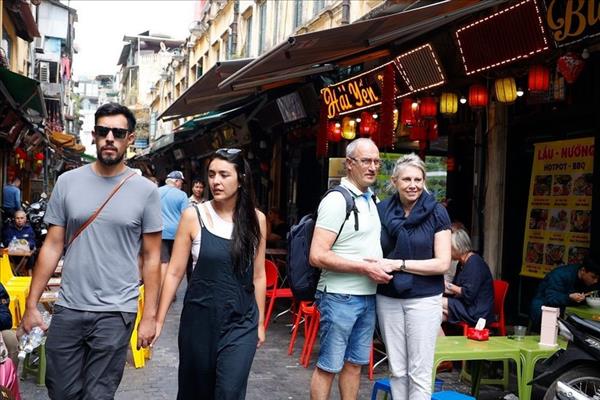With productivity of 1-1.5 tonnes per hectare and a price of 35,000-40,000 VND per kilo, sea grape growers have enjoyed improved incomes.
Sea grape grower Dang Ngoc Thoai of Ninh Hai Ward, Ninh Hoa Town in Khanh Hoa said he earned a profit of 100-200 million VND per hectare from growing sea grapes.
Now, he has about five hectares of sea grapes. In harvest time, he hires about 10 people to help collect, sort and process sea grapes.
"Sea grape cultivation does not require huge investment but can bring stable income and jobs,” he said.
Besides his own products, Thoai also buys those of other growers in his neighbourhood to supply the domestic market and to export.
However, like many other sea grape growers in the ward, Thoai is working in an area that is part of a delayed project.
“Once the project resumes, I will have to move,” Thoai said, adding that he will invest more to develop the business if he finds a different cultivation area.
Tran Thanh Tung, Vice Chairman of the Ninh Hai Ward People’s Committee, said all 27ha of sea grape cultivation area in the ward was on land slated for a heavy industry complex project by the Korean investor STX Group.
“However, since the land was transferred to the investor in 2009, no item has been developed and the area has been unused,” Tung said.
Vo Khanh Dang, Chairman of the Ninh Tho Commune People’s Committee in Ninh Hoa Township, said local farmers shifted to grow sea grapes to earn more than from traditional aquaculture products.
However, they had not found stable outputs for their sea grapes and had to accept the prices that wholesalers offered.
There was about 20ha in the ward being used for sea grape cultivation, Dang said, adding that local authorities were considering placing sea grapes on the list of key farming products to develop.
“To include sea grapes in the local farming development planning, we need more studies and assistance from expert agencies,” he said.
Le Ben, Vice President of the Vietnam Seaculture Association, who introduced sea grape cultivation to Vietnam in 2004 in Ninh Hai Ward, said the cultivation was very promising and generated economic benefits.
Besides economic benefits, sea grapes can improve the aquaculture environment quality since they develop quickly, have strong anabolism and high nutrition uptake. They can be grown while cultivating shrimps and fish – this intercropping allows two to three times higher income compared with shrimp or fish cultivation alone.
Sea grapes are a highly nutritious plant that can be used as a substitute for green vegetables. They contain high quantities of protein and minerals, such as calcium, magnesium, potassium and sodium, as well as iodine, iron and vitamin A, which help prevent malnutrition and anaemia.
Sea grape cultivation is now present in several coastal provinces in Vietnam, including Khanh Hoa, Binh Thuan, Ninh Thuan, Kien Giang and Vung Tau ,Phu Yen, Binh Dinh in the south and Quang Ninh in the north.
“Seeing high profits from sea grape cultivation, many farmers are rushing into it,” Bền said, adding that oversupply and improper farming technique could leave negative impacts on the emerging sector./.
VNA/VNP

















